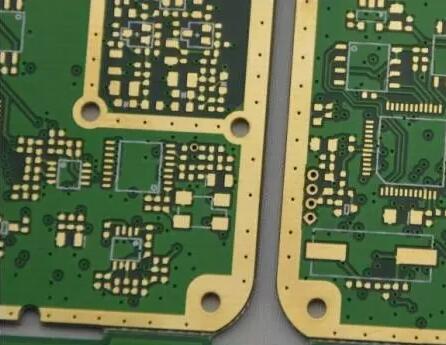Immersion gold is achieved by chemical deposition, which generates a thick coating through chemical oxidation-reduction reactions. It is a chemical nickel gold deposition method that can achieve thicker gold layers.

Gold plating generally refers to "electroplated gold" or "electroplated gold". The principle is to dissolve nickel and gold (commonly known as gold salts) in a chemical solution, immerse the circuit board in an electroplating cylinder, and connect the current to generate a nickel-gold coating on the copper foil surface of the circuit board. Electroplated nickel gold is widely used in electronic products due to its high hardness, wear resistance, and low oxidation resistance.
The metal coating on PCB circuit boards is usually achieved through gold plating or immersion gold processes. Both of these processes can increase the electrical performance and mechanical strength of the circuit board, but there are some differences between them.
1. Process principle
1) PCB immersion gold is a process of depositing metal ions on the surface of a circuit board. During this process, the circuit board is immersed in a solution containing gold salts and reducing agents, and gold ions are reduced to metal and deposited on the surface of the circuit board.
2) Gold plating is the process of immersing a circuit board in a solution containing gold salts, and then applying electricity to deposit gold ions on the surface of the circuit board.
2. Metal thickness
1) The metal thickness of PCB immersion gold and gold plating is different. Immersion gold can form a relatively thick metal layer, usually up to 2-5 microns.
2) The gold plated metal layer is relatively thin, usually only about 0.5-1.5 microns.
3. Metal color
1) The metal colors of PCB immersion gold and gold plating are also different. The metallic color of heavy gold is golden yellow,
2) The color of the gold-plated metal is light yellow.
4. Surface flatness
1) The surface smoothness of PCB immersion gold and gold plating is also different. The surface of the immersion gold is relatively flat, which can maintain high-quality welding and contact performance.
2) The gold-plated surface is relatively rough and prone to welding and contact problems.
5. Crystal structure
The crystal structure caused by immersion gold and electroplating gold is different. Compared to electroplating gold, immersion gold is easier to weld and less prone to poor welding during the welding process. In addition, immersion gold is softer than electroplating gold. When making gold finger circuit boards, electroplating gold is usually chosen, as hard gold has stronger wear resistance. Compared to electroplated gold, precipitated gold has a denser crystal structure and is less prone to oxidation.
Immersion gold is a surface treatment technology for circuit boards, which is mainly used to improve the conductivity, corrosion resistance, and reliability of circuit boards.
The gold plating layer can protect the circuit board from oxidation, corrosion, and other effects, increasing the service life of the circuit board.